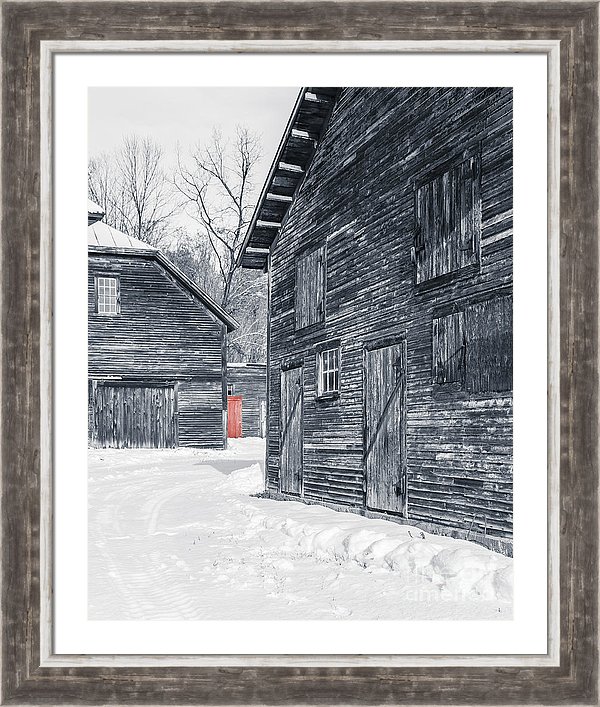Vermont – How does one truly capture a sense of place in photograph? That’s a good question with no definitive answer. There are no camera settings or com-positional rules that guarantee one will come back with a photograph that captures the essence of a place. But there is I think an ingredient in the recipe that is universal and that is time.
I’ve visited this old barn compound in Windsor, Vermont on many occasions in all different seasons. It’s one of my favorite spots to return to and work out the various compositions afforded by this interesting spot that most would simple drive by on their way to the “top ten” tourist spots.
To truly start to understand a place and then transfer that feeling to others in your photography required spending time in a place. When photographers fail to capture a place in their images, with the result being “ho-hum” or dull photos, its typically because they show up at a spot, say on vacation, and start snapping away before even actually seeing.
When the camera is raised to the eye before the brain actually has time to take in what is being scene, the results are typically uninteresting. Too often we photographers have limited time at a certain place and are rushed to cram in as many “hot spots” or Kodak Moment locations in a day, that we fail to return with a single excellent shot.
Capturing truly excellent images usually requires more intent and planning then what is afforded say on a bus tour through a national park. The most memorable photographs are taken when the light is at its best rather than when you happen to arrive at the location.
And I’ve found that visiting a site over time and through out the year is the best way to truly start to understand what it is you are seeing and trying to capture. Some tips for capturing the essence of a place:
- Leave the camera at home on your first trip to a place. (I know this one is tough). Walk around, study all the angles, thing about where the sun is and what type of lighting will look best.
- Return to a spot throughout the year.
- Return to a spot at different times of the day.
- Go on sunny days, go on overcast days.
- Don’t set up a tripod right away. Walk around and look. See the image in your mind before selecting a lens and angle.
- Bring a step ladder and view the spot from up high, bring a towel and lay down on the ground for a low angle.
- Look beyond the obvious, over done shots. When the crowd looks one way, turn around and see what they are missing.
